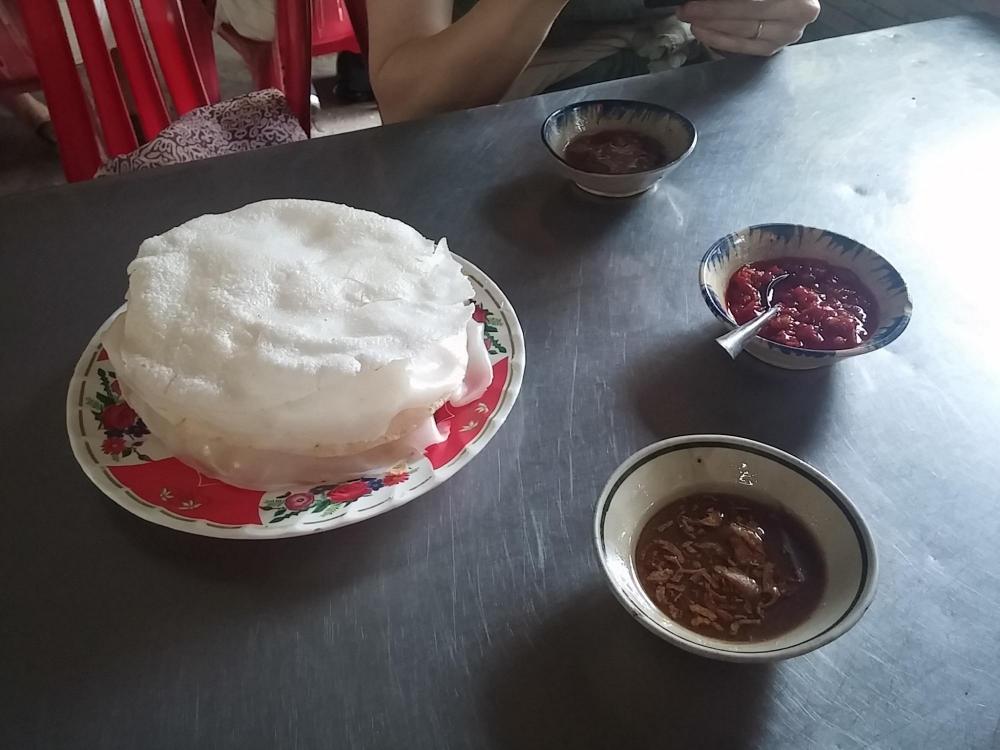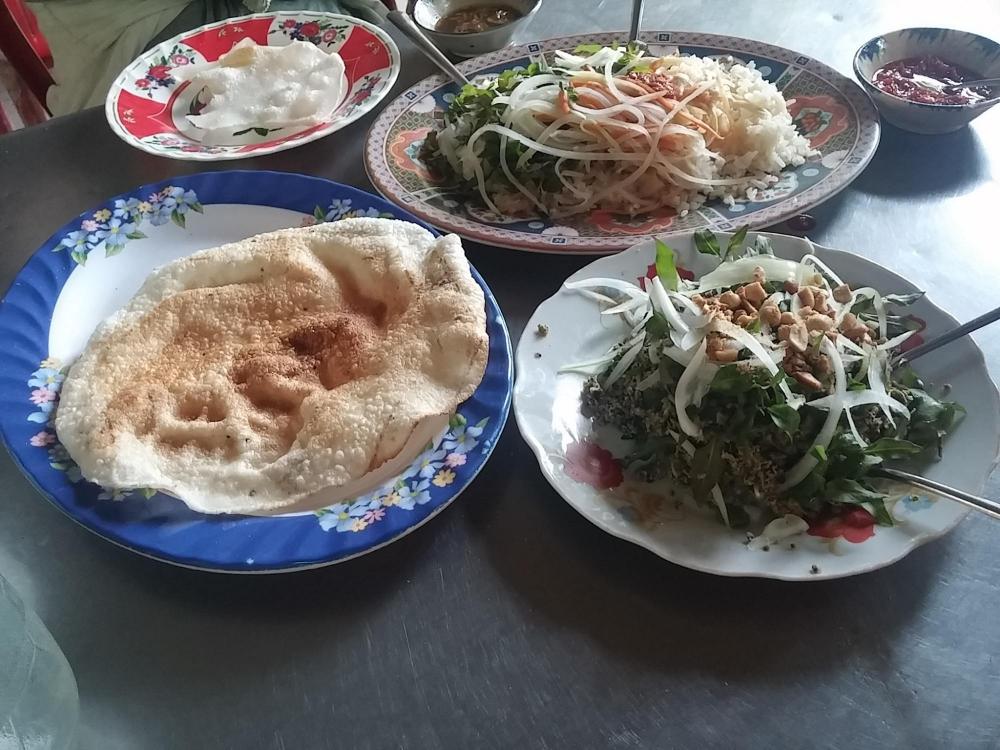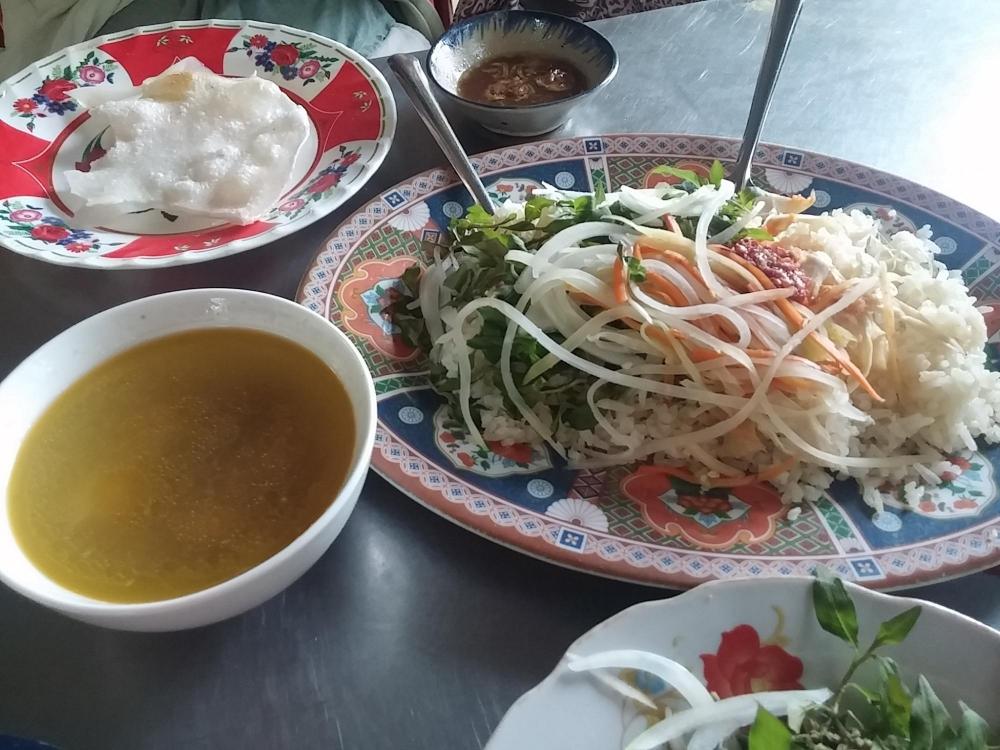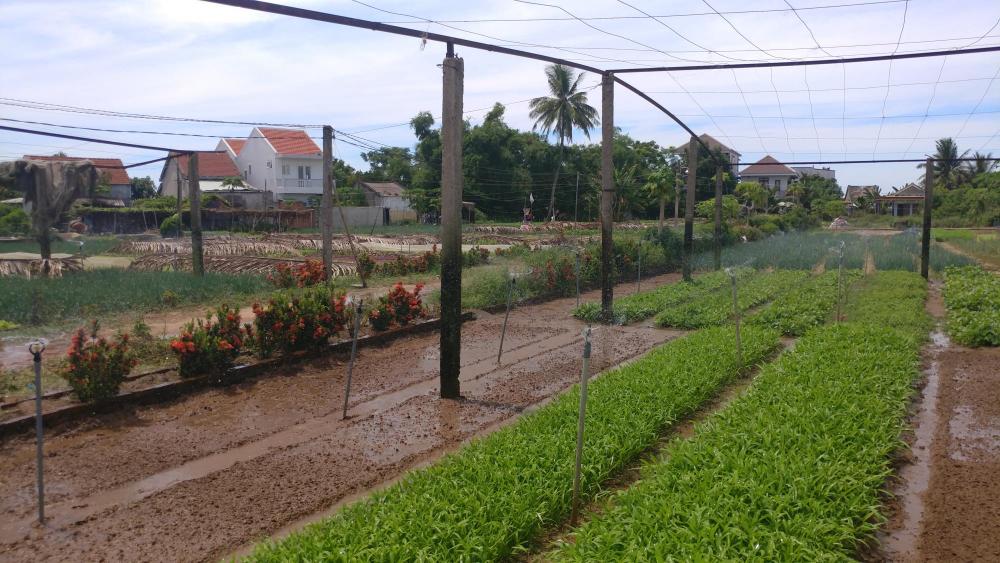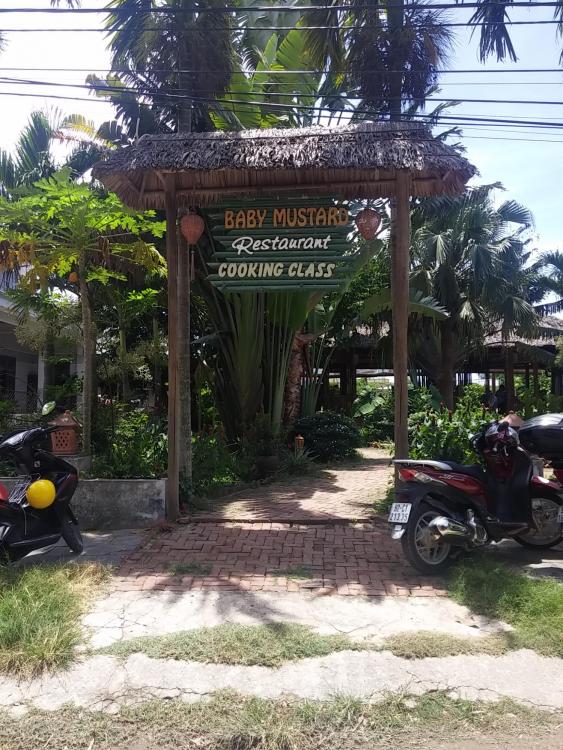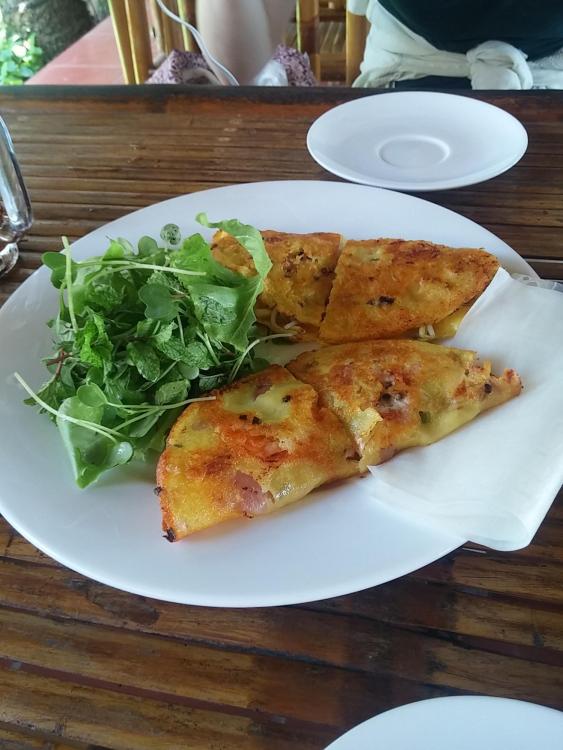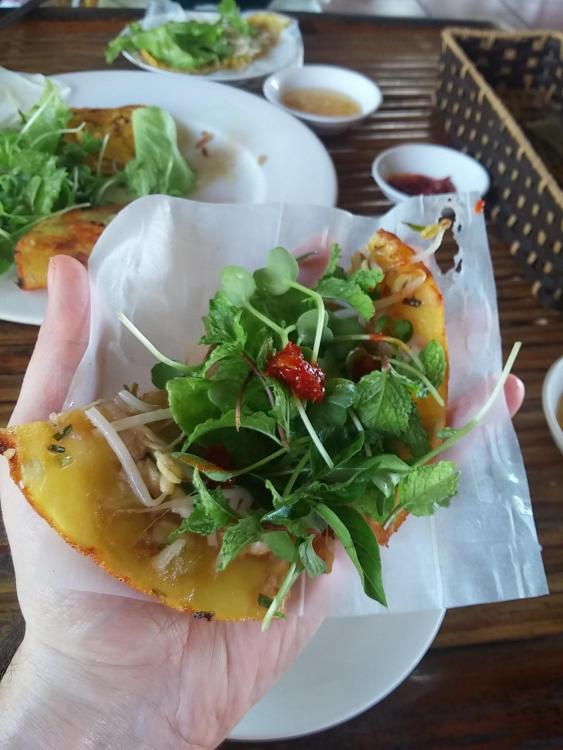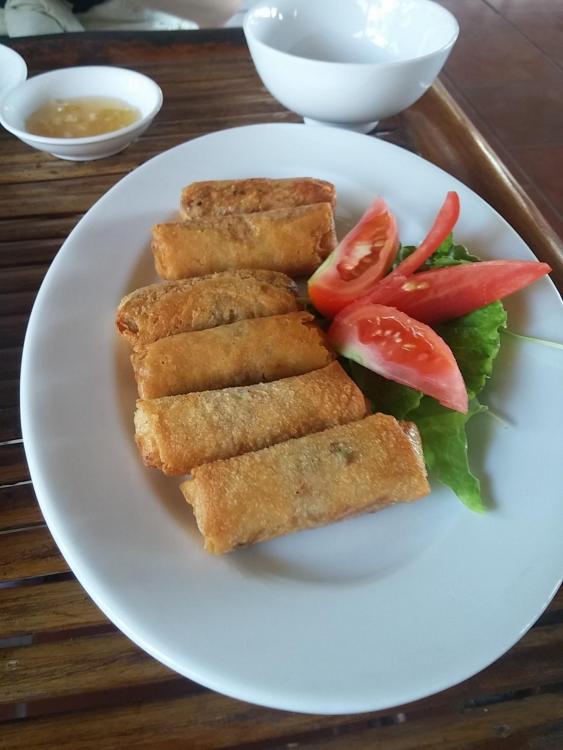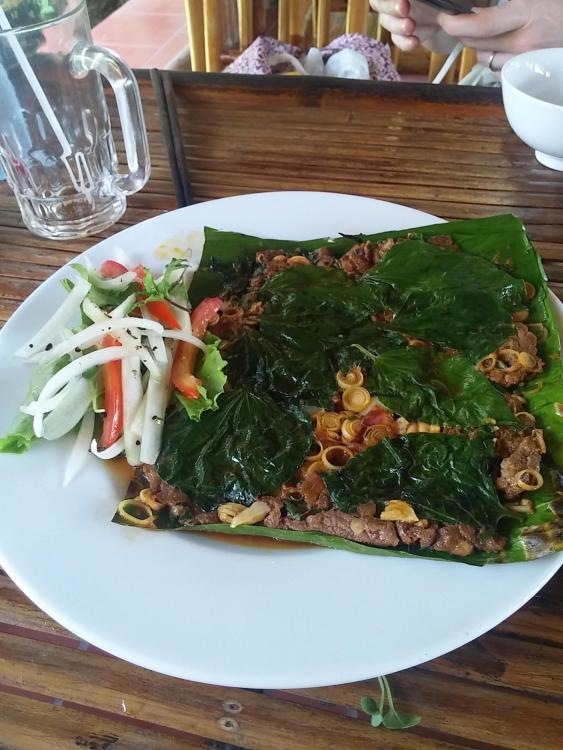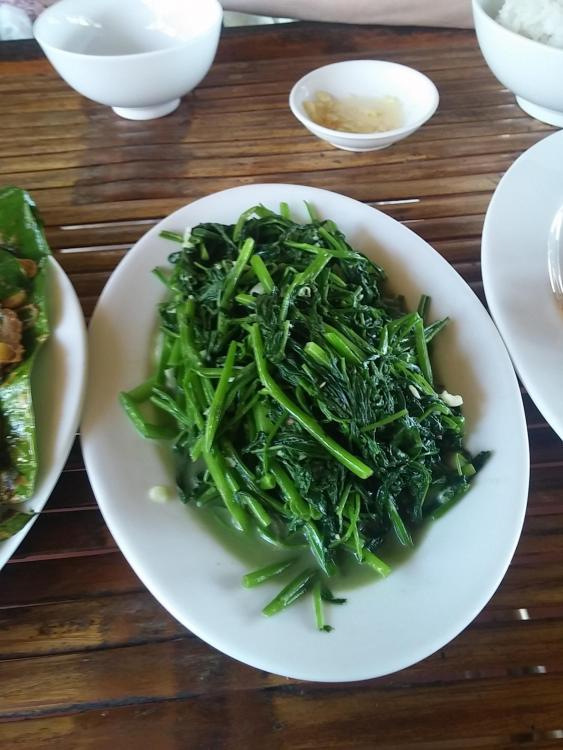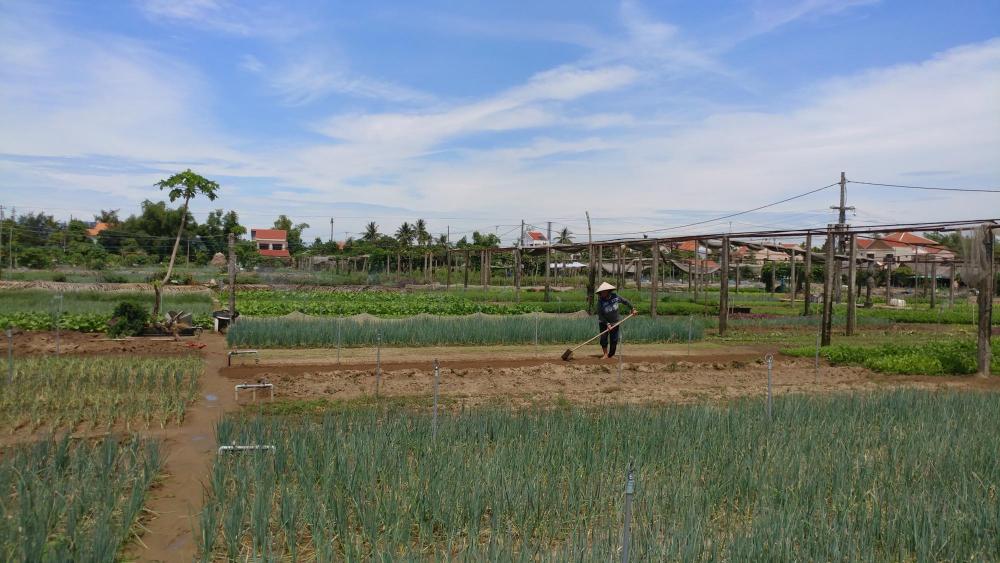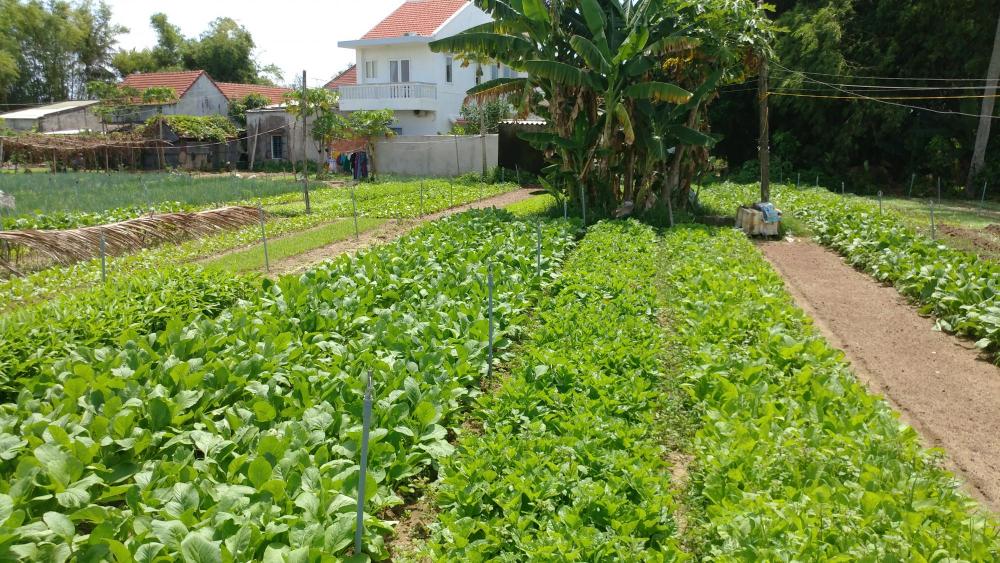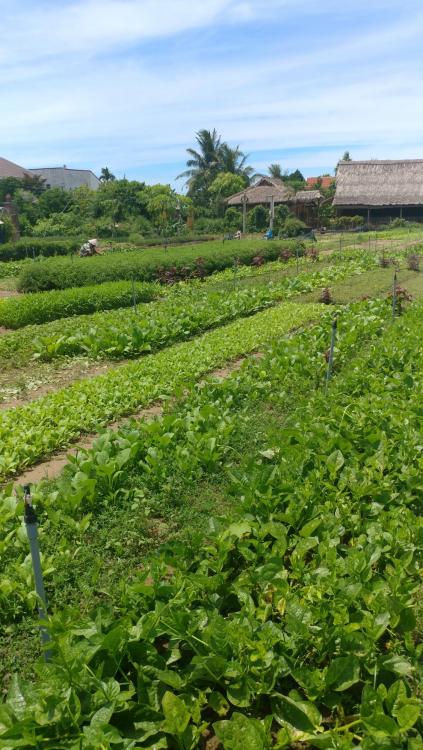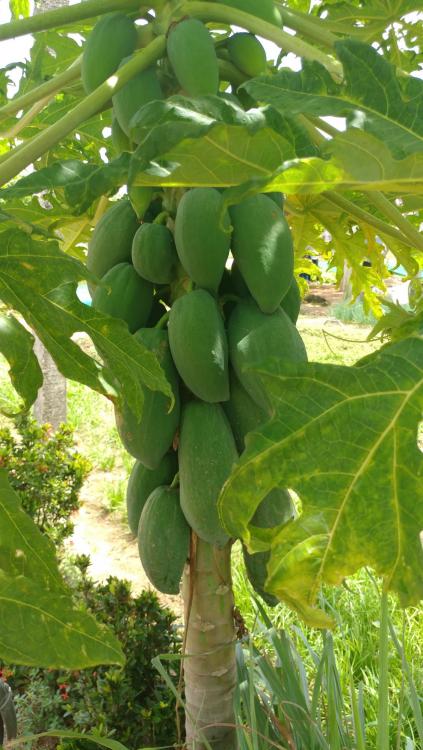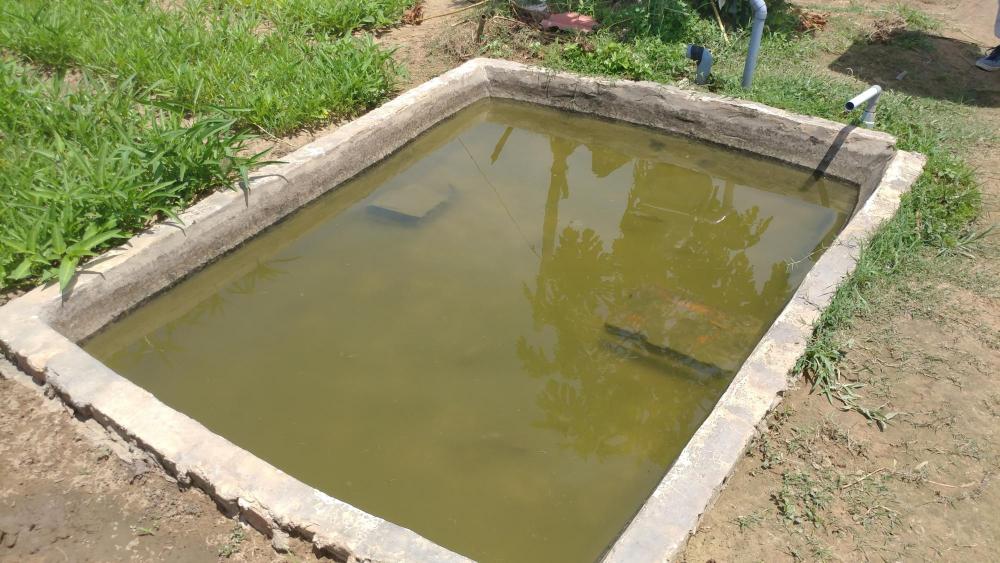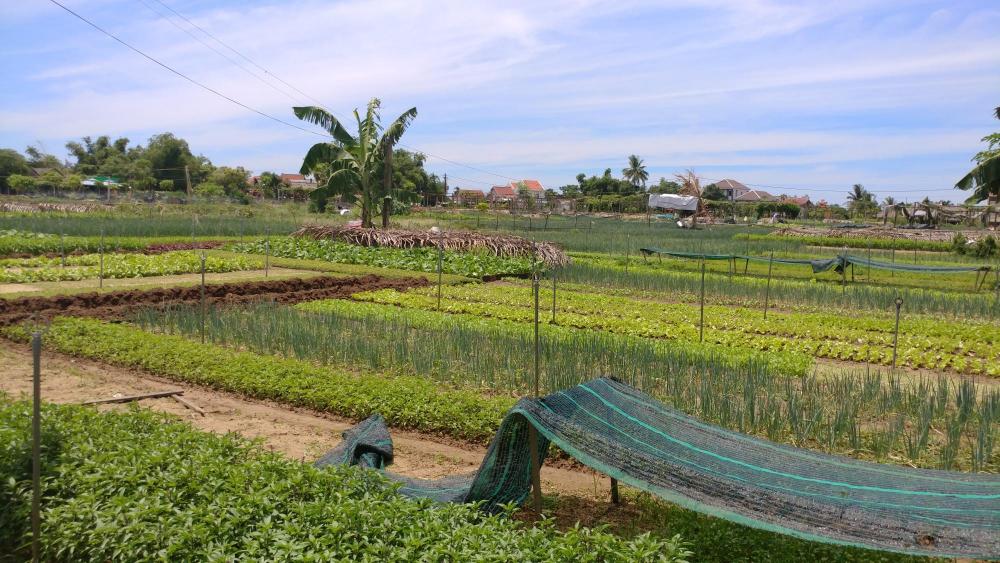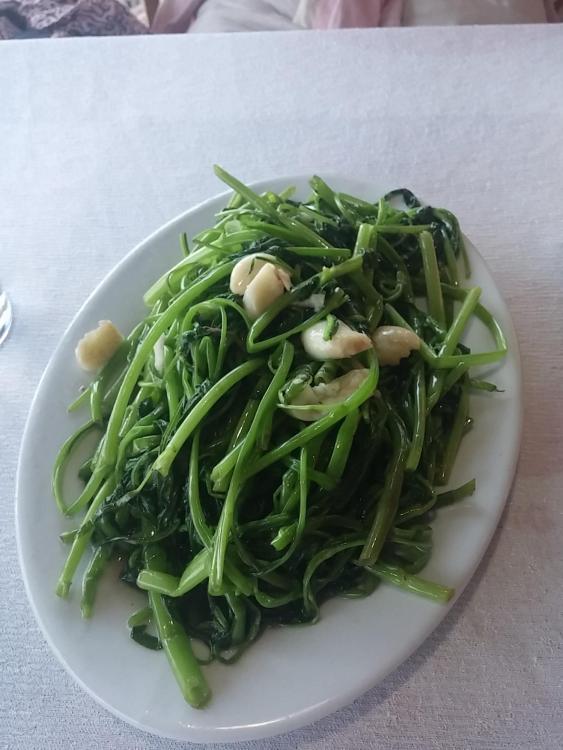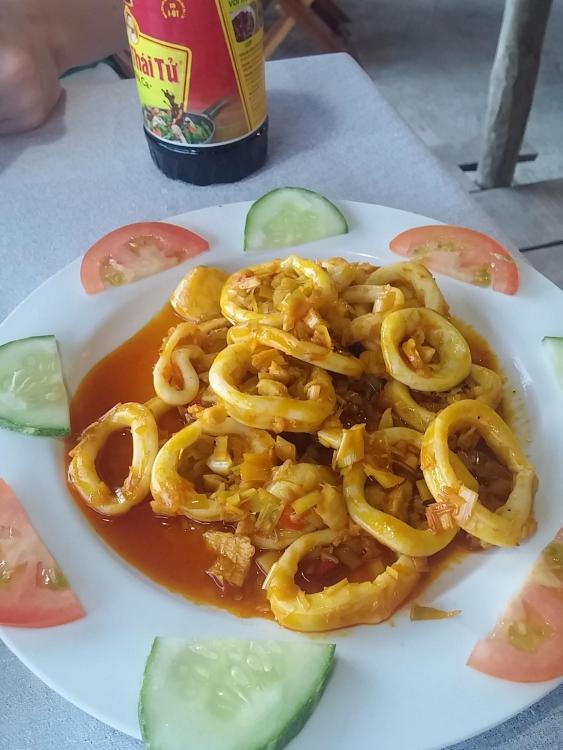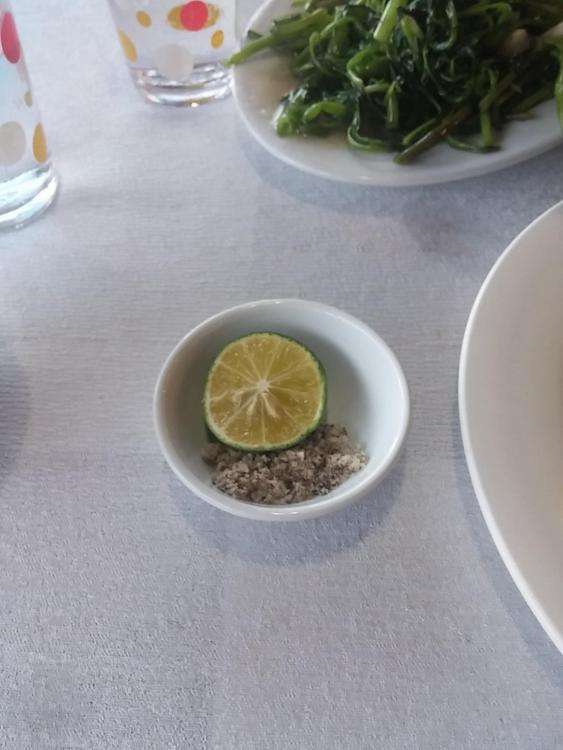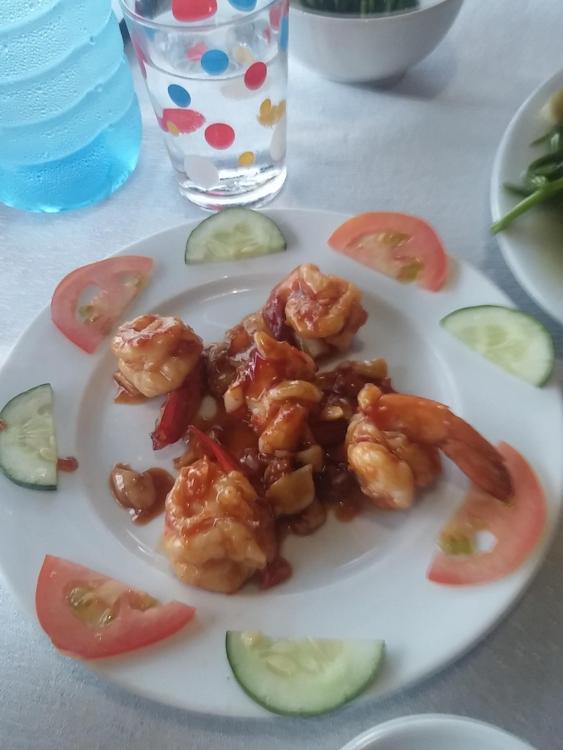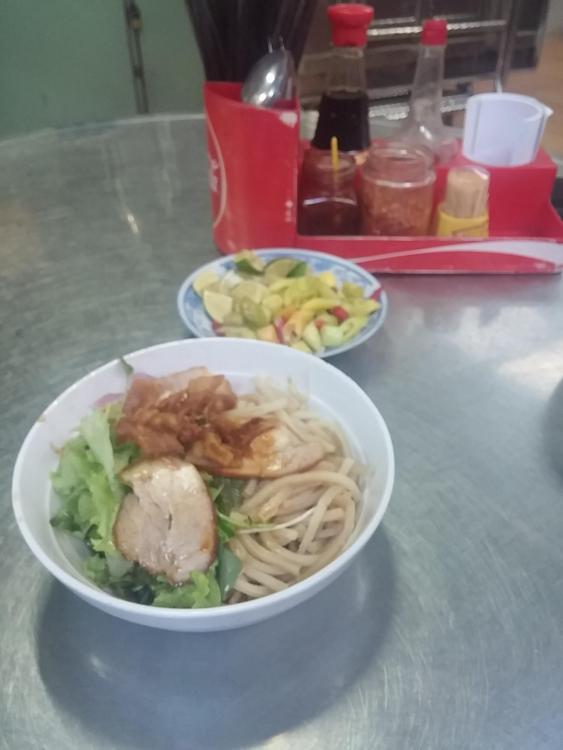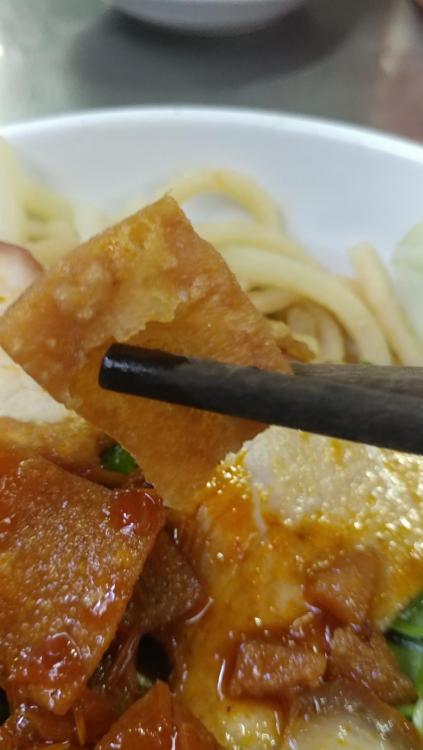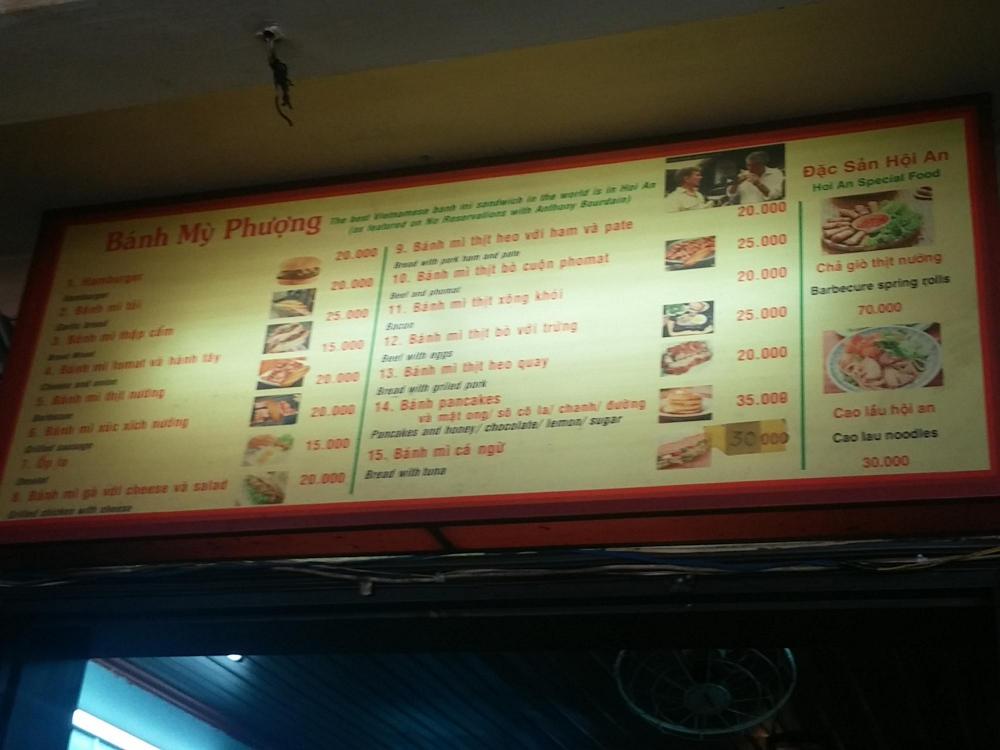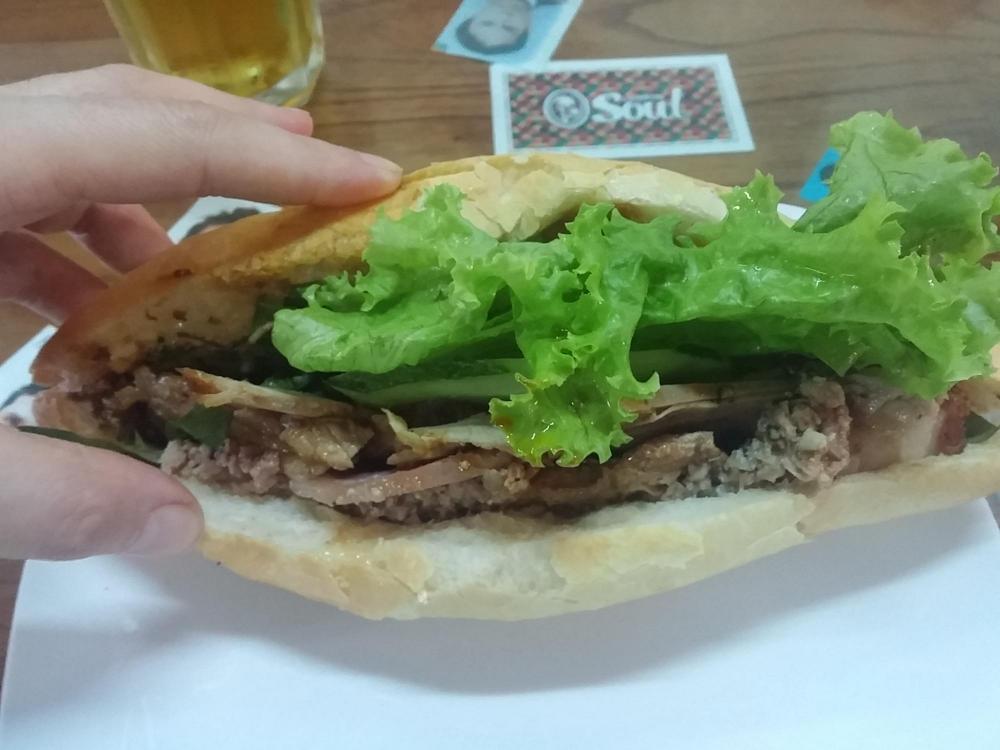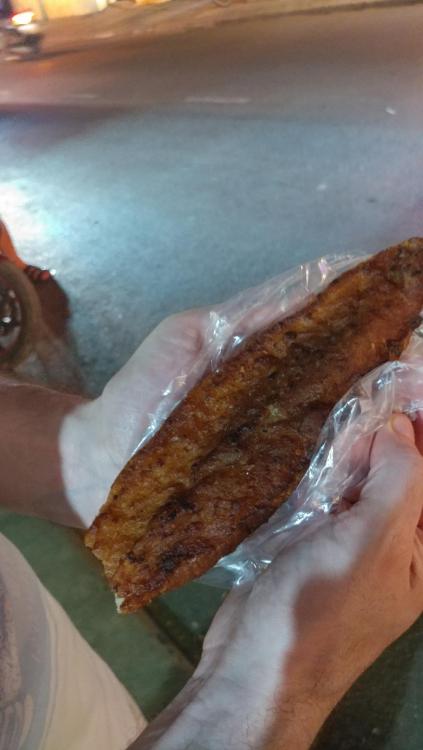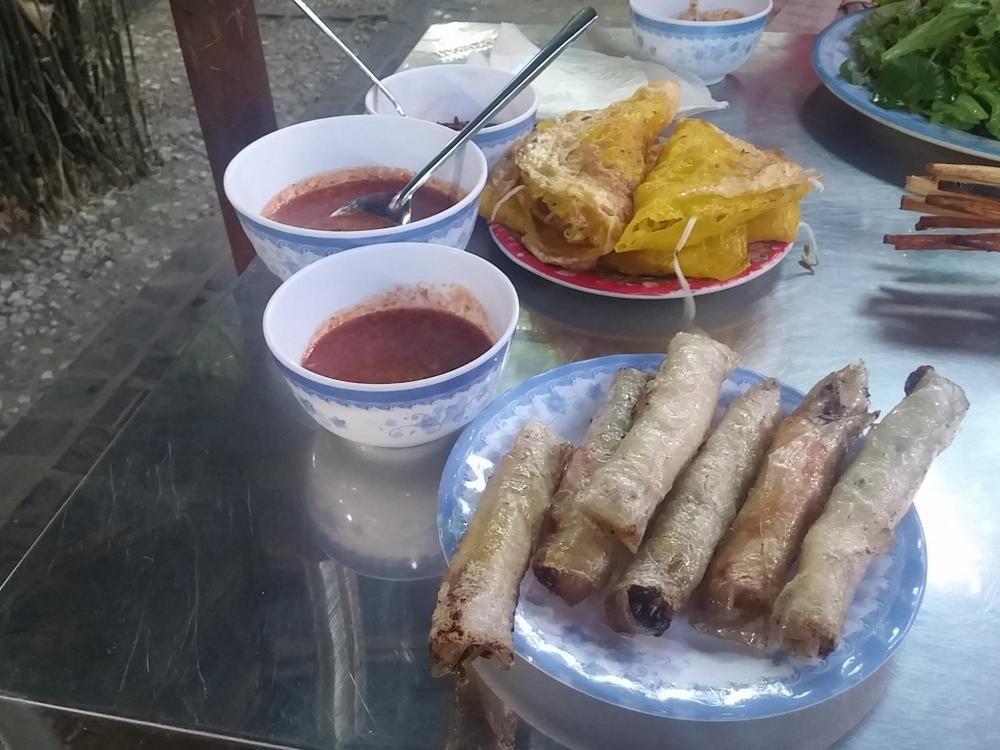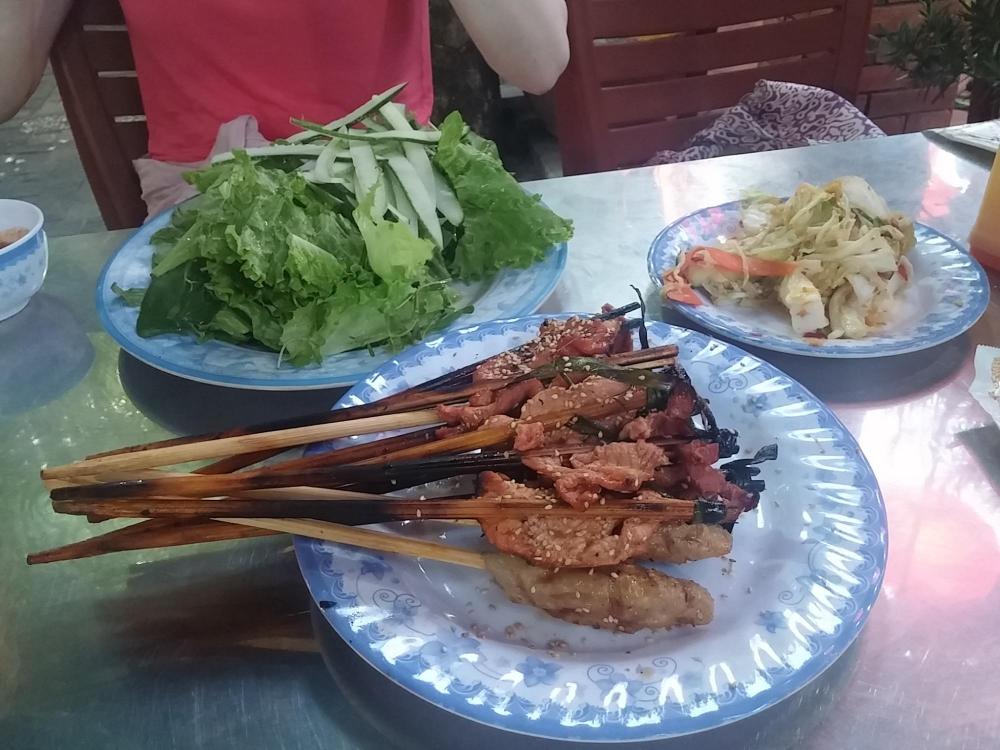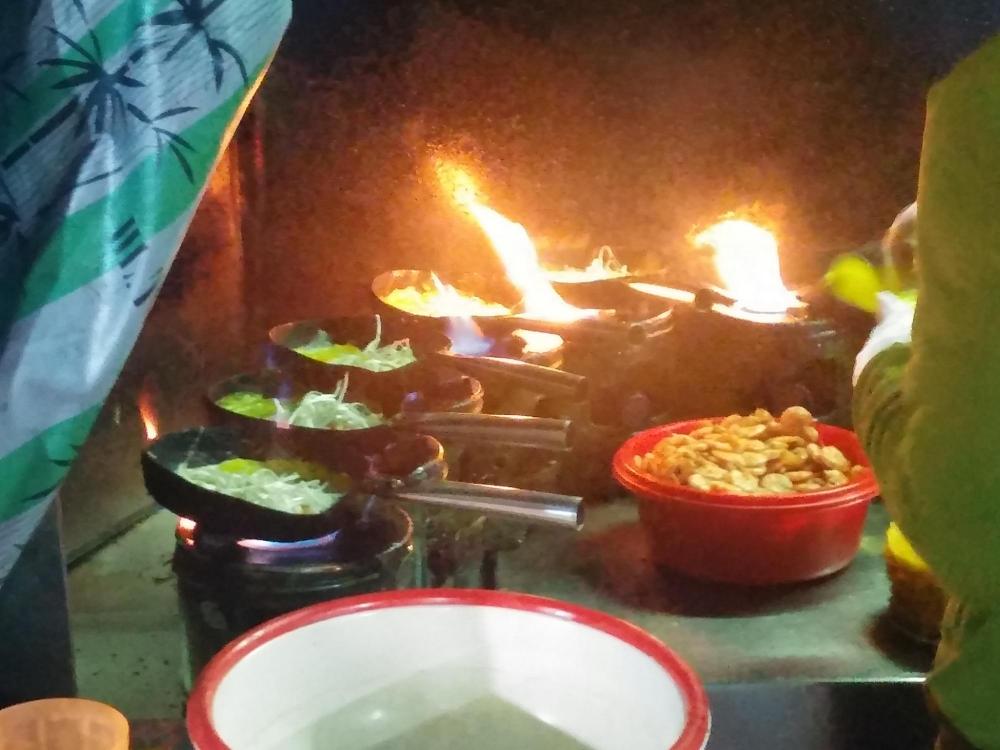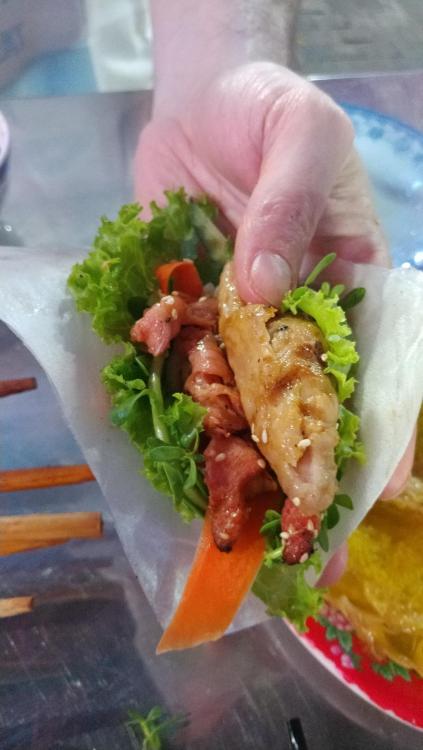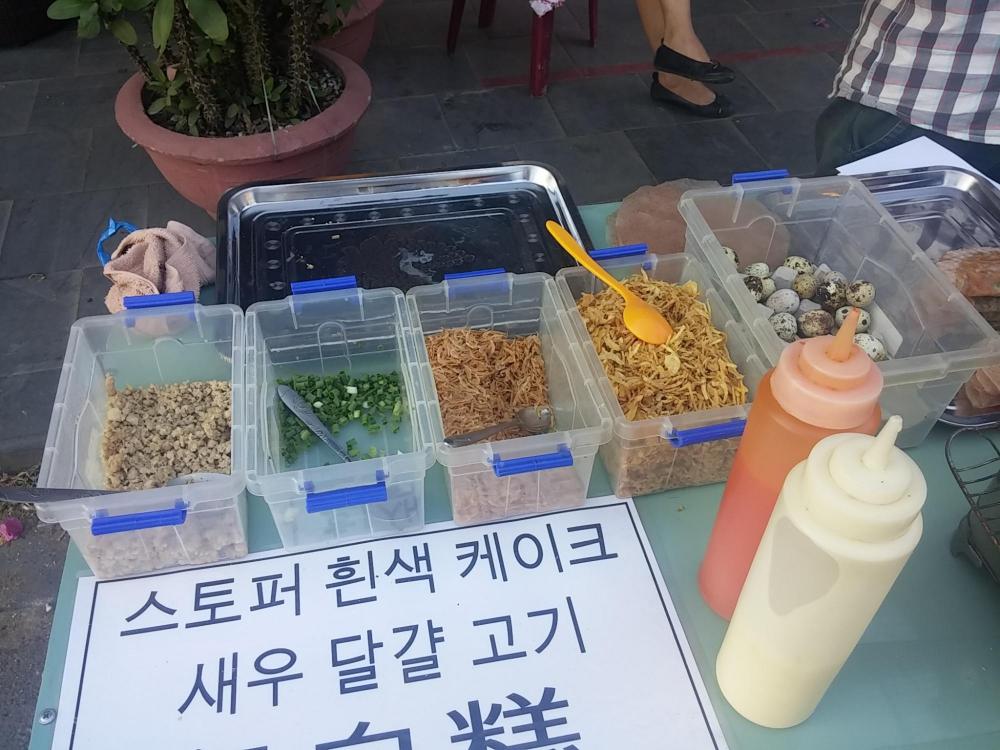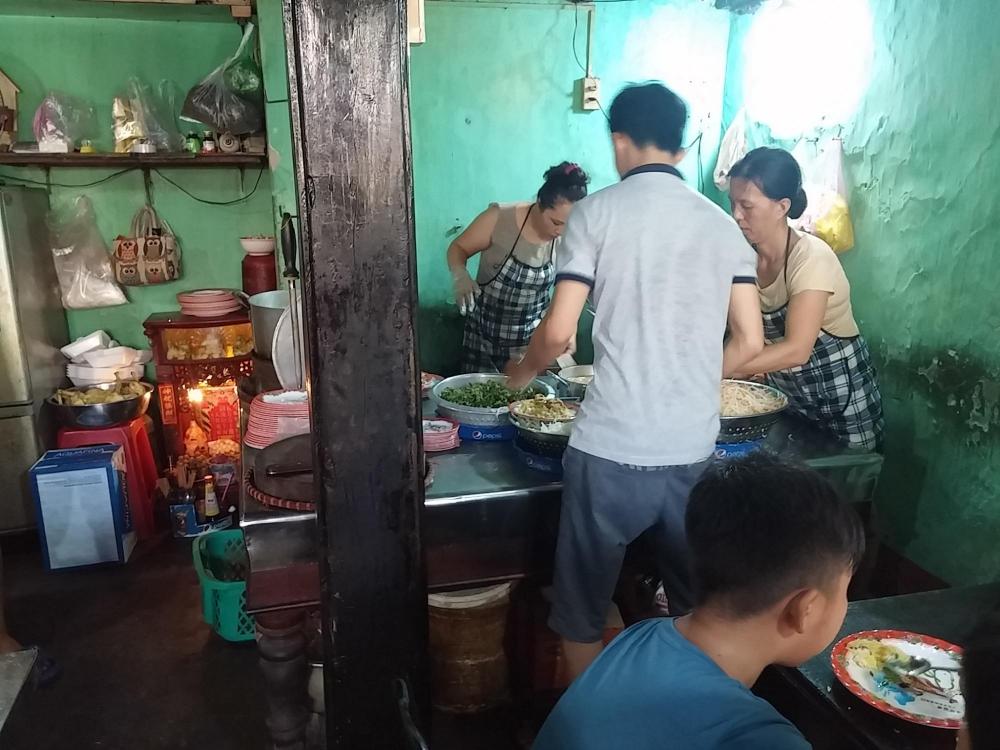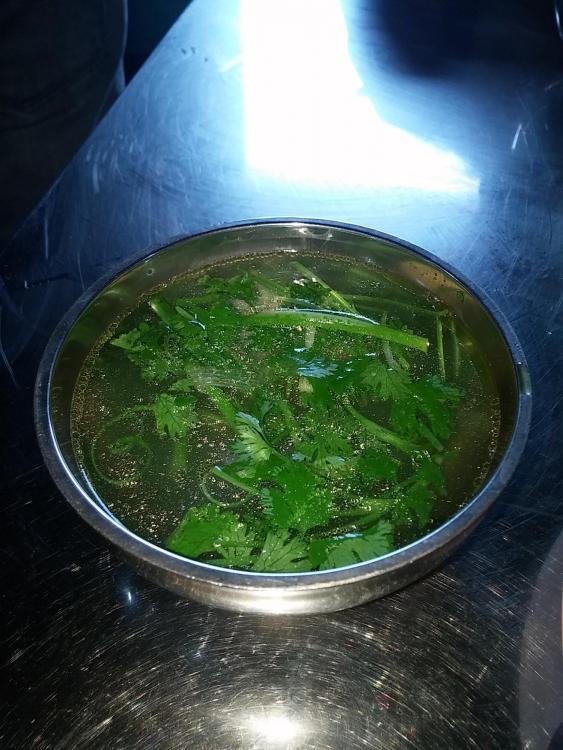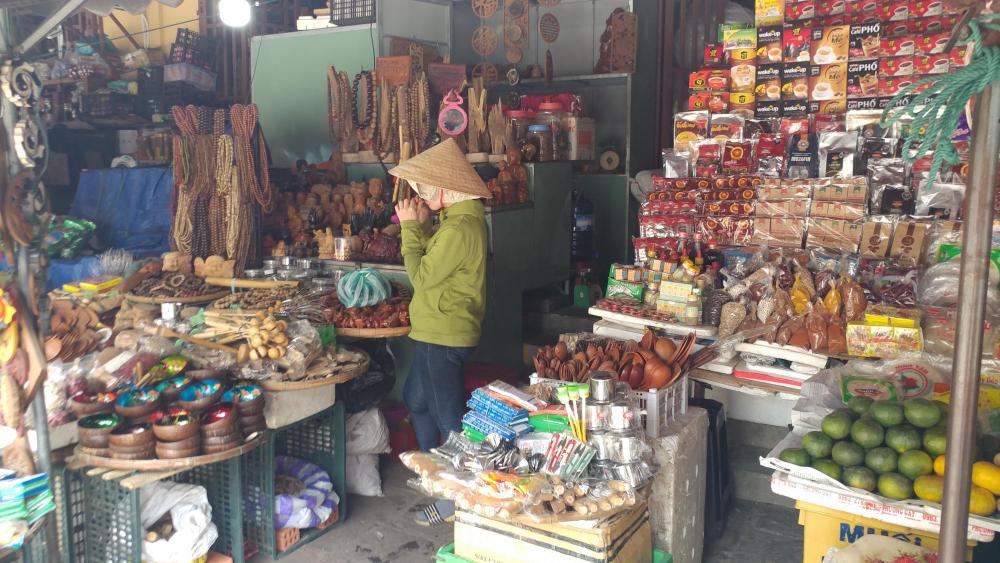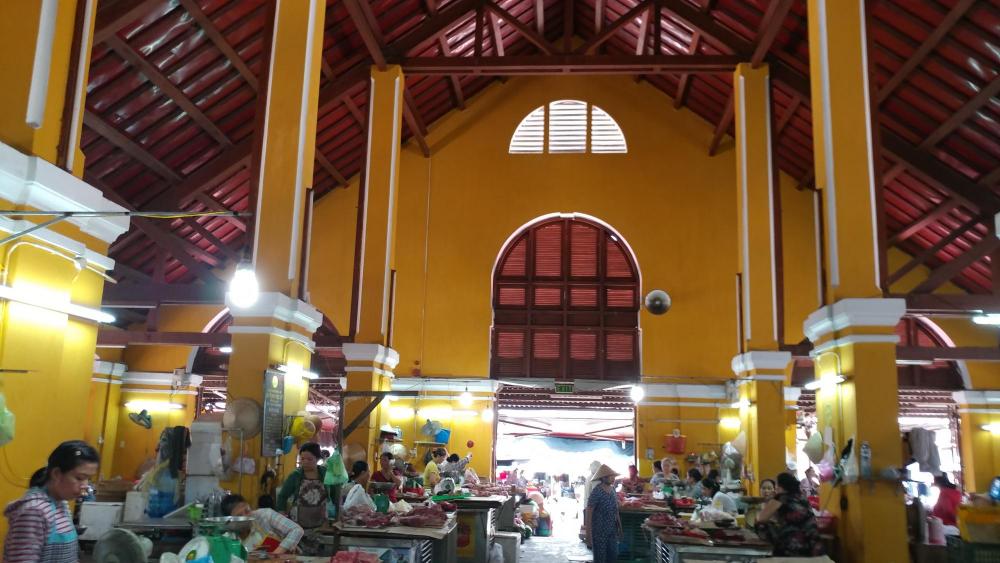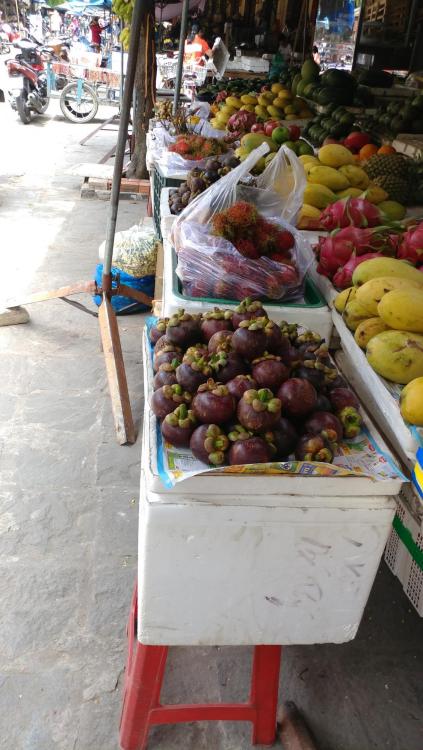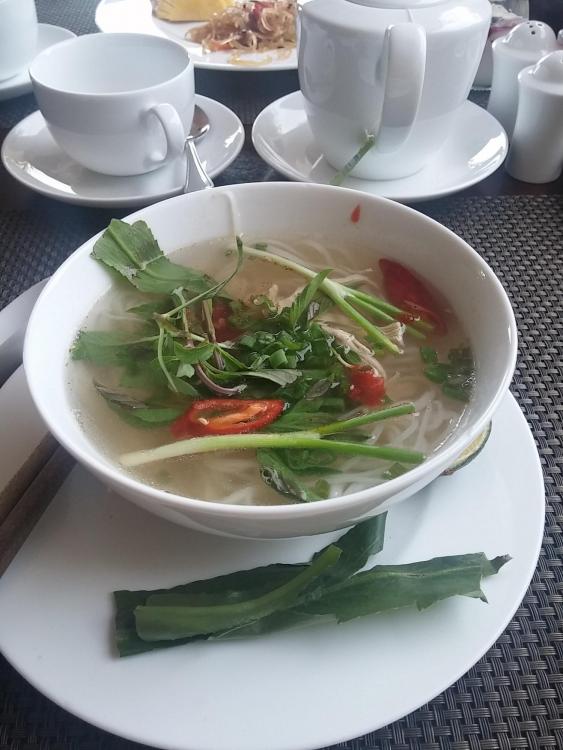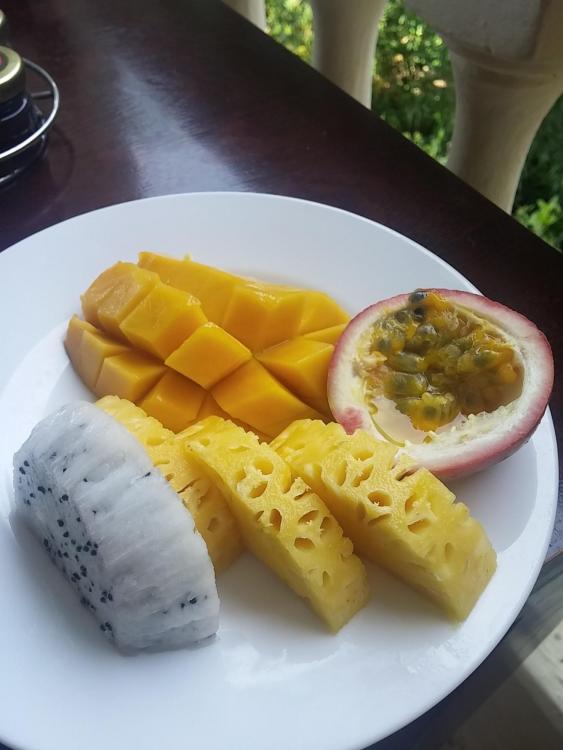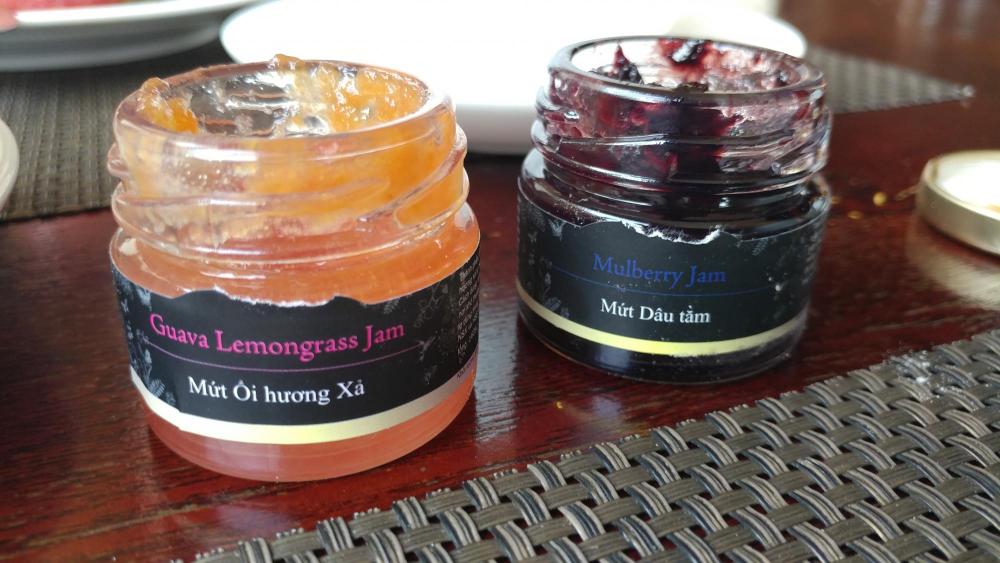
KennethT
participating member-
Posts
6,940 -
Joined
-
Last visited
Content Type
Profiles
Forums
Store
Help Articles
Everything posted by KennethT
-
Week in coastal Central Vietnam foodblog
KennethT replied to a topic in Elsewhere in Asia/Pacific: Dining
It was crazy... For most of the time we were there, there was a daily high of about 100F with 95% humidity. I think the heat index was about 120F or something like that. The early mornings and evenings were cooler - about 85F. I don't think it went below 80F for the first 7 days or so. Then there was a big thunderstorm (pictured way up in the teaser section) and the heat broke - it became a high in the upper 80s to low 90s with only moderately high humidity (it is tropical). -
Week in coastal Central Vietnam foodblog
KennethT replied to a topic in Elsewhere in Asia/Pacific: Dining
For dinner, we took a short walk over a bridge to Cam Nam island, which is interesting just because they make some dishes on that island that are not available anywhere else in Hoi An. The bridge is pretty narrow, and the "sidewalk" is ridiculously narrow... We took a picture on the way back, when it wasn't that crowded, but on the way there, it was rush hour, so imagine the bridge elbow to elbow with motorbike and car/truck traffic in both directions. it was pretty harrowing - my wife was gripping the stone railing for dear life! Once you cross the bridge, and walk down the road to its end, there are a bunch of restaurants one after the other that all basically serve the same dishes.... We just picked one that looked the busiest. One dish to go here for is: This is banh dap (buymg dap (sounds sort of like tap)). There is a crispy rice paper on both sides of a piece of wet rice paper that you smash to break into pieces, then dip in the murky brown mam tom sauce, which is basically shrimp paste in water with lime juice, some sugar, and garlic - very shrimpy and very addictive (if you like pungent, fermented shrimp). The chili paste in the middle is for you to add to your dish of sauce if you want it spicier. The bottom two plates are Hen Tron (hen chon), which is basically a big plate of minced clams. Very clammy - topped with sliced onion, peanuts and sprigs of Rau Ram (rrggrrow rrggrram). You eat this with the piece of grilled rice paper, banh trang (buymg chuymg), which is crispy. Our waitress also convinced us to get a plate of chicken rice (co'm ga): The chicken rice came with soup - and the waitress told us that you're supposed to put a spoonful of soup on the portion of rice you're about to eat. Mind you, she did all of this by miming, and pointing to a picture of the co'm ga and not leaving until we ordered it. I'm glad she did though, because there's only so much minced clams a person can eat (even if they like clams) so it was good to get another dish that was a little more substantial. This whole meal cost about $3. What's also nice about this place is that it came with this view from our table: Walking out, we saw this scene: Then walking through the cute little village again before going back over the bridge: Then a short walk along the river back to our hotel... a scene along the way: -
Week in coastal Central Vietnam foodblog
KennethT replied to a topic in Elsewhere in Asia/Pacific: Dining
@SmithyThese are the typical limes found in SE Asia (I think we discussed this in the Singapore foodblog) - they are the true limes, similar (if not even the same) to key limes. What we call Persian limes, or Bearss seedless limes, are not a true lime but a cross between a key lime and a lemon. There is a picture of the lime, unsqueezed, upthread in the section about the restaurant on the beach. They commonly squeeze this lime onto salt/chili or salt/pepper to make a paste for dipping meat or seafood (or sometimes fruit). These limes taste much like a key lime - I can't compare direclty, because I've never had them side by side, but they seem the same to me - they have thinner skins than a Bearss lime - sometimes the lime is cut into small pieces, skin and all, and eaten like in the dish Mieng Kum in northern Thailand. This lime also has seeds. -
They sometimes use shade cloth when growing lettuce in greenhouses too. Very effective - lettuce doesn't need or like full sun.
-
Week in coastal Central Vietnam foodblog
KennethT replied to a topic in Elsewhere in Asia/Pacific: Dining
Seriously, maybe they're using a strain of heat resistant lettuce? -
Week in coastal Central Vietnam foodblog
KennethT replied to a topic in Elsewhere in Asia/Pacific: Dining
Plus you basically need to spray it ALL THE TIME. In some of the plots where nothing was growing, there were puddles!!! -
Week in coastal Central Vietnam foodblog
KennethT replied to a topic in Elsewhere in Asia/Pacific: Dining
I know!! I was shocked to see lettuce growing so well in full sun in 100degF with 95% humidity. Maybe because it was constantly being sprayed with magical algae water? -
Week in coastal Central Vietnam foodblog
KennethT replied to a topic in Elsewhere in Asia/Pacific: Dining
After viewing the garden, we went to one of the restaurants that gets all of their produce from the village - they also have a cooking school: It had a very peaceful setting with an open air, thatched roof. There was a family of British people, 2 adults and 2 small kids - maybe 6 and 8 years old? - who were taking a cooking class, which was done at one end of the dining room. It was interesting to see little kids dropping stuff to be deep fried into a small wok precariously balanced on a small propane burner. No one was injured in the making of their lunch that day. I didn't take a photo of it - I thought that might be rude... but it was a cute scene. Lime juice - by the time we got there, we were ridiculously hot and sweaty from sauntering around the vegetable village - even with our sun umbrellas! So refreshing... Banh Xeo, served with rice papers, lettuce, some kind of sprout, and spearmint (no peppermint this time). Not nearly as greasy as the one at BaLeWell - very tasty. It came with a fish sauce with lots of smashed garlic. Here's an action shot just prior to consumption: Cha Gio spring rolls - not greasy at all ... very good. Bo La Lot (baw lah lut) - beef covered with lemongrass and la lot leaves (betel leaves) and grilled on a banana leaf. This was awesome. The beef was tender and flavorful, and the betel leaves definitely impart a unique flavor that is hard for me to describe. And the lemongrass was actually tender - which was mindboggling since when I use lemongrass at home, the desiccated stalks, even when cooked have the texture of sawdust. more Rau muong stir fried with garlic Off the back end of the dining room was the restroom, and next to it, a small plot of farm land and drying racks for what looked like sweet potato crackers. -
Week in coastal Central Vietnam foodblog
KennethT replied to a topic in Elsewhere in Asia/Pacific: Dining
The next day, we visited the Tra Que (chah gweh) Vegetable Village in the morning. The village was established about 300 years ago, and supposedly has the best tasting herbs and vegetables because they use no fertilizers or pesticides, but the water they use has a specific kind of algae that makes everything taste so good. All the produce is used in Hoi An by most of the local restaurants. There is supposedly a whole list of plants that they grow, but when we were there, I only saw a few varieties of things... We saw lettuce, a lot of mint (peppermint!), what looked like green onion, cilantro, morning glory, thai basil with small leaves and a few other odds and ends here and there. I was looking for that weedy herb that I saw in many dishes that I liked, but never saw it there. Lots of the farmers supplement their income by also having a cooking school for tourists, and part of the experience is to "practice being a farmer" which I jokingly translated into temporary free labor... well, better than free, they pay you to weed your garden!! Supposedly, there is a fee to view the village, but we couldn't find a ticket booth and when we asked a person overseeing some "temporary farmers", she said that a guy walks around to issue tickets, and if you see him, run the other way! To be honest, I didn't think the herbs or veggies that I had (that all supposedly came from the village) tasted much different than normal - or had any more flavor than what I grow at home. In fact, I thought the hydroponic herbs I grew (comparing apples to apples) were more flavorful... but in any case, here's some photos of it. Green onion? Lettuce Fish mint down at the bottom!!! Run!!!! A papaya tree here and there A reservoir containing the magical algae water... there were several of these scattered around, plumbed into pumps that fed the sprinkler irrigation system. Some peppermint down at the bottom. -
Week in coastal Central Vietnam foodblog
KennethT replied to a topic in Elsewhere in Asia/Pacific: Dining
For dinner that night, we decided to go to a seafood restaurant on the local beach. There are two beaches in Hoi An, Cua Dai (koo-uh die) beach, which is the more touristed one as it's closer to town, and An Bang (un bumg) beach which was more local. We're not really beach people, but I had heard that there are some good seafood restaurants at An Bang beach.... plus, it was beautiful to hang out and watch the sunset while having dinner on the beach. There are many restaurants in a strip behind the beach, which all looked like they had the same things (vietnamese seafood, then hamburgers and pizza!), with all of the places looking like they had their own tanks full of live fish and seafood waiting for orders. This is the view from our table: Rau Muong (rrggrrow moo-umg) - stir fried morning glory (water spinach) with garlic. Yum! Squid with lemongrass and chili - perfectly cooked with a nice lemongrass flavor, not too spicy. Grilled scallops with peanuts and green onion. So good, and I'm not usually a fan of scallops! I think the orange stuff you see in there is roe or something like that. dish of salt/pepper to make a paste with the lime juice for dipping grilled foods. shrimp with tamarind sauce This was not served with banh mi, as would have in Saigon, and I don't think we even saw any rice or anthing like that - but we didn't really need it since we had our cao lau snack just a couple hours before... -
Week in coastal Central Vietnam foodblog
KennethT replied to a topic in Elsewhere in Asia/Pacific: Dining
After lunch, being thoroughly sweaty and tired after the morning sightseeing, we went back to the hotel to relax in the A/C and get some pool time. Interestingly, the pool water felt like bath water, it was so warm! But, it was nice to relax... after the pool time, we walked around the old town some more (which really isn't that big - it's maybe 8 blocks by 3 blocks), and then ventured off into a local neighborhood away from the old town to find a really good, local Cao lau, since the one on the first night was rather disappointing, for a mid-afternoon snack to satisfy my tape worm. When we got to the place that I had been recommended, we found that it was closed! But, two doors down was another Cao lau place that was busy (we got the last table) and looked good. This one was awesome... really really tasty. The noodles had a very intersting texture - firm but soft, and the outside was rough. The pork crackling was incredible - light, crispy, not greasy at all.... fantastic. The greenery consisted of lettuce, that weedy herb that I saw from time to time (that I now wish I brought back) and mint. Oddly enough, there was a lot of mint in things all over central VN - but not the mint that we had in Saigon - it tasted like peppermint! After a while, we found that everything reminded us of Wintergreen chewing gum... Here are the ladies out front making the dish, and making a to-go order for someone on a motorbike: -
Week in coastal Central Vietnam foodblog
KennethT replied to a topic in Elsewhere in Asia/Pacific: Dining
So the next day, we woke up really early to go out to the My So'n (meh-ee sun) Champa ruins, originally constructed between the 4th and 14 centuries. It's probably about an hour and a half drive from Hoi An, and we left really early because we wanted to get there before the tour buses did. Some people said not to bother going because the Champa ruins at Angkor Wat in Cambodia or Borobodur in Indonesia are much more stunning, but considering we haven't been to either of those yet, My Son here we come! Plus, we had the time and we felt it would be ridiculous to be so close and to not see it. It was sad to see that so much of the site was devastated by bombing during the US war. Many guidebooks say to keep to the well-trod paths because there could be unexploded land mines in the area as well - although, guides that we met there said that over many years, they (along with help from other countries) have swept the area and they think they have removed it all. Luckily, since we got there pretty early, there were few other tourists there, and we had a beautiful (if not ridiculously hot, even in the morning!) day for it. We got back to Hoi An just around lunchtime, so rather than take us back to the hotel, I asked the taxi driver to drop us off here: This is Banh Mi Phu'o'ng (buyng mee foo-uhm) - a banh mi sandwich place made extremely famous by St. Bourdain on his Hoi An show. On that show, he proclaimed this place to make the "best banh mi in Vietnam" which is quite a claim - I'm sure he's tasted all the other ones first so as to properly make that claim!!! But, in his honor, they have put his photo (a frame grab from the episode) all over the place there. To be honest, I thought the banh mi was very good, but certainly not the "best in Vietnam". Personally, both banh mi I got in Saigon, but especially that grilled meatball banh mi I got from a cart (see the Saigon post) was more enjoyable to me, but I'm not St. Bourdain, so what do I know. Also, just like the rest of the bread we had in central VN, we thought the texture of the bread wasn't as good as the multitude of ones we had in Saigon - the outside not as crispy, the inside not as light and tender. Don't get me wrong, it was still very good, but not mind-blowing like the ones we've had previously. The menu... they also had tables inside, and a multi-page menu (one item per page) showing all their banh mi, plus all the other dishes they made - they made a bunch of the "hits" of Hoi An like Cao lau, spring rolls, etc. Also note the prices - most of their banh mi cost less than $1 - we got 2 of the specials, which included the pate and several different cuts of pork. The inside consisted of pork pate, some kind of ham, pork belly, and some lean pork meat, plus the mayonnaise, lettuce, cucumber, pickles, and I got some chili in mine. -
Week in coastal Central Vietnam foodblog
KennethT replied to a topic in Elsewhere in Asia/Pacific: Dining
@SmithyThere is no way I'll try to reproduce the "pork toasts" at home! My doctor would have a fit! Funnily enough though, my wife and I joked that I had a tape worm on this trip, as I'd find myself starving every few hours. I don't know if it was because the portions are relatively small (many of the locals we saw in central VN were very thin - even more so than the normally slender SE Asian person we've encountered on our various travels - even the stray cats and rats around looked skinny!) or the heat or all the walking around, but I definitely think I lost weight on this trip! -
Week in coastal Central Vietnam foodblog
KennethT replied to a topic in Elsewhere in Asia/Pacific: Dining
How could I forget this? While walking back to our hotel from BaLeWell, I stumbled on a vendor selling this: This is Banh Mi Cha Chien (buyng mee sha shee-en) - or fried pork bread. A mixture of ground pork, garlic, salt and sugar are spread on the bread and then the whole thing is deep fried. I had read about this in my research of Hoi An, and I saw a vendor selling fried stuff from a cart across the street. The street was busy at that time, and as in much of Vietnam, there are no traffic lights, crosswalks, or anything to break the flow of traffic - so crossing the street is always fun... but my wife was too nervous to cross with me, so she stayed across the street and waited for me to come back. Unfortunately, the bread in Central Vietnam (or what I had of it) wasn't nearly as light and crisp as what was in Saigon, and the resulting fried bread was a little chewy and tough, and slightly greasy - so I didn't eat that much of it - but found once eating it, it was a little addictive for some odd reason. But it was fun to try it.... and cheap - like $0.40 or something like that. This is me looking to cross the street after making my purchase. You might notice in the background that there is a tailor shop (there's a dress on a mannequin by the steps). Hoi An is known for its tailors - there are literally 5 on every street, each of them hawking you as you walk by (and each have their own incense burning on the sidewalk or at the entrance to their shop!) The most often heard phrase in Hoi An is "hello, you want to buy something?" It was cute in the beginning, but it soon wore on me - and if you tried to be nice by making eye contact and saying "no, thank you" in English or Vietnamese, mind you, that would just encourage them more - so we just learned to not look at them and keep walking. But, no one is too aggressive, and they all hawk with a smile, so it's really not that bad... and they don't take offense if you just keep on walking. Also, once you get out of the most heavily touristed areas, you don't see that happen anymore. -
Week in coastal Central Vietnam foodblog
KennethT replied to a topic in Elsewhere in Asia/Pacific: Dining
Yes, in Hoi An, the smell of incense is everywhere... not always super-strong, but ever-present. Less so in Hue, but it was still there here and there. I can't imagine a whole cone of incense in a bedroom! This actually reminds me of the 'old days' in NYC - back in the '80s and early '90s when taxi drivers would commonly burn 2-3 sticks of incense at once on their dashboard! -
Week in coastal Central Vietnam foodblog
KennethT replied to a topic in Elsewhere in Asia/Pacific: Dining
This is the Phu'o'c Kien (foo-uhkg kee-en) Assembly hall: Note the amount of incense in the altar. There was a ridiculous amount of incense constantly being burned everywhere in Hoi An. It seemed like every shopkeeper burned had a few sticks constantly burning stuck in cracks in the sidewalk in front of their shop, or they would burn bowls full of scented wood of some kind... everywhere. We constantly wondered what each store's incense budget was... or if they were given an allotment from the city once a week or something. We asked a guide about it in Hue, and he said that in Central Vietnam, a lot of people's ancestors died in the war, and many people burn incense for them. They also put out offerings of goods that their ancestors liked - fruit, cigarettes, a small bottle of whiskey.... These are cones of incense hanging from the ceiling. They're huge - maybe 3-4 feet tall, and spiraled that way, who knows how long that rod of incense is. By the way, all of those cones (and more not shown) are lit and slowly burning away... underneath each of them are little piles of ash that get swept away from time to time. Sometimes a bit would drop on you as you walked underneath! For dinner, we went here: This is a very famous tourist restaurant called BaLe Well, which is located right near the Ba Le well.... oddly enough, they don't make the Cao Lau noodles that use the well water! Every tourist guidebook says that you must go here, and from the looks of the place, people listen because the place has a huge outdoor covered seating area. The guidebooks all say that locals go there too, but to me, it just seemed like everyone seated around us were Vietnamese tourists - I know they were Viet because of the language used speaking to the staff, but I thought they were tourists because they all (as did we) had to be shown what to do. They don't really have a menu, other than for drinks - because they bring you everything they make for a set price. Here is most of the stuff we got - all this, and other stuff later, for about $7 per person - not bad, but relatively very expensive compared to local food places. At the top left of the photo above, underneath the bowl of sauce, is a stack of thin rice papers - they're very flexible even while dry. You take two of them, add in lettuce leaves and some herbs, the meat from a satay skewer or sausage (nem), some pickles, and a spring roll, then fold like a taco, dip into the sauce and eat. Or, take the rice paper, put in a small pancake (banh xeo), add herbs and pickles and dip/eat. Bottom to top: spring rolls (cha gio or also called ram cuon (rrggrrahm gkoo-ahn) - not greasy at all; nuoc tuong (noo-uhk too-uhm) sauce; banh xeo (buhng see-ow); rice papers. The sauce was very interesting. It is a murky mix of pork liver, garlic and hoisin, and who knows what else... it is thick, a little chunky, and very savory - and quite delicious, especially when slathered on everything. The banh xeo was a little disappointing after having a great example in Saigon. These were much smaller, and by comparison not crispy at all, actually quite greasy - like they had been sitting around, which they probably were. This place is a factory - right after you sit down and order drinks, they basically bring everything all at once - so you know it wasn't made to order for you. If you're there when it's very busy, you might get fresh ones, but we were there on the early side and the place was maybe 1/4 full... so these were waiting around. L-R: Lettuce, herbs and cucumber; nem nuong (nehm noo-uhmg) which is the sausage and thit nuong (t-heet noo-uhmg) which is the grilled slices of pork; pickles. Both the nem and satay were very good. All of the veggies and herbs came from the Tra Que Vegetable Village (which we visited, and I'll discuss later) - herbs included diep ca (zee-ep kah) which is fish mint (not a huge fan), very small thai basil leaves, cilantro and a little weedy looking herb which I found here and there but never got a name for it - it didn't have much flavor but was a little astringent - good with fatty foods. I figured I'd see it in Hue as well, and try to take a sprig or two home (I came prepared) but sadly, didn't see any outside of Hoi An so I never got to bring any home... Here's my first "taco": Here's a shot of them making the banh xeo... -
Week in coastal Central Vietnam foodblog
KennethT replied to a topic in Elsewhere in Asia/Pacific: Dining
Here's a mid-day snack: Banh Trang Nuong (bahng chung noo-uhm), or as the cart says, grilled rice paper. Basically, you take a thin, flexible sheet of rice paper, fill it with dried shrimp, chili sauce, pork, bean sprouts, fried shallots, green onion and a quail egg, fold in half and then grill over charcoal - another specialty in Hoi An... very tasty, and quite shrimpy. This was relatively expensive, I think because it was in a heavily touristed spot right by the river... 1 piece for 30,000VND (about $1.30) or two for 50,000 VND ($2.20) his Mise-en-place: The ones on the silver tray were waiting to be grilled. Once done, he wrapped it in what looked like a sheet of printer paper and off you go. Here's our view while eating our snack: -
Week in coastal Central Vietnam foodblog
KennethT replied to a topic in Elsewhere in Asia/Pacific: Dining
ha! As I had written earlier, we both did a LOT of sweating - we joked about our hotel advertising their spa, and one of the features was the steam room/sauna... we joked that it was really just a small room with a door open to the outside! I think the key to not being completely miserable was to get out early, then get back to the hotel and cool down in the A/C or swimming pool for a couple hours, then go back out later in the day. We were up at 5:30 or 6AM basically every day - then back to the hotel by 12 or 12:30, the back out around 3:30 or 4... And, we had our running joke on Facebook, posting photos of ourselves using the hashtag #sweatcontest2017 which you can search for and should be public. My wife won.. hands down... hehehe.... -
Week in coastal Central Vietnam foodblog
KennethT replied to a topic in Elsewhere in Asia/Pacific: Dining
Now, onto lunch! We had a great recommendation for a Co'm Ga (gkum rrggrrggah) place, which is a very common dish in Central Vietnam - it's actually chicken rice, but is a little different than the Hainanese chicken rice we had in Singapore, and that is available in different variations all over Asia. This place was very busy, with people only speaking Vietnamese- in fact they spoke no English there whatsoever, but it's not a big deal since they only make 1 thing - so you basically can sit down and they bring it to you without asking - although they did look at us funny, and confirmed that we wanted to eat there when we walked in by saying inquisitively "Co'm Ga????" I don't know whether the other patrons were tourists or locals, but we did see quite a few people drive up on their motorbikes and get some to-go orders, so I assumed they were local. This is typical of how places are named. The top line tells you what they make - in this case, chicken rice. Ba Buoi (baaa boo-oy-ee) is the name of the owner - Ba is the term for Mrs. and Buoi is her name. Most food establishments seem to be run by women. The guy standing up in the back is one of the workers chopping chickens and assembling plates... here's another shot of the action: This is what the dish looks like: The rice is yellow due to a small amount of turmeric that is used quite a bit in the region. Sliced onions on top with chopped chicken meat, some herbs - notably Rau Ram (rrggrrow rrggrram) which is otherwise known as Vietnamese coriander (although it tastes nothing like coriander) and cilantro. Also note the large amount of black pepper on top - also common in the region. This was accompanied by a plate of pickled daikon and carrot (sorry - the shot didn't come out so well for that). In addition to the rice and chopped chicken, there also various other chicken parts strewn within - I had a couple of kidneys, and my wife had a blood cake: It also came with chicken soup: Some people were eating the soup as soup, but others would take a spoonful of it and douse the portion of rice on the plate that they were about to eat. All in all, very tasty, and a fun local food experience.... also quite cheap - each plate (including the soup) was about $1. Granted, it didn't have much chicken meat, and as we were leaving, I only noticed that some people had ordered plates of extra chicken... oh well, one problem with not fully understanding the language - here and there you miss out on some things... -
Week in coastal Central Vietnam foodblog
KennethT replied to a topic in Elsewhere in Asia/Pacific: Dining
After seeing the Japanese covered bridge, we walked around the corner to see the old Tan Ky house. This house was built 200 years ago and is still intact, and has housed 7 generations of the same family. The first floor is open to visitors. This is the view coming through the front. The overexposed portion in the lower left corner is a central courtyard which is a feature of all classic Vietnamese houses. The courtyard provided light and ventilation. A shot of the courtyard. This tour guide was giving her tour in German. They had guides that spoke many languages, and when you entered the house, they first asked what language you spoke, and grouped you together so you could share the guide. OK, back out of the house and walking around, we found our way to the market area... Who's this sweaty guy buying some mangosteen? Produce and assorted trinkets are sold on the exterior of the market. Meats are sold on the inside - with no refrigeration - however, I am to understand that most of the meat sold was probably slaughtered that morning and brought directly to the market, limiting the spoilage. Also sold on the inside are legumes and other assorted pantry items, not pictured. There is also a prepared food stall section for people to eat a meal. We didn't bother because, while there are a lot of vendors, they all looked like they were selling things prepared in a central kitchen somewhere... each booth was practically identical to each other - and each one hawked you as you walked by. Back on the outside of the market, a shot of another fruit vendor... there were quite a few: Mangoes, dragon fruit, rambutan and mangosteen -
Week in coastal Central Vietnam foodblog
KennethT replied to a topic in Elsewhere in Asia/Pacific: Dining
I'm not sure what these flowers are, but they do certainly look like bougainvillea.. -
Week in coastal Central Vietnam foodblog
KennethT replied to a topic in Elsewhere in Asia/Pacific: Dining
I don't know if I would call the food bland - I think I would use "subtle". Also, in general, the people in Central Vietnam have less money than people in Saigon, and I think the food reflects that, as you'll see in forthcoming scenes... We did encounter some really good food on this trip - but the flavors weren't as explosive as those in Saigon. -
Week in coastal Central Vietnam foodblog
KennethT replied to a topic in Elsewhere in Asia/Pacific: Dining
After breakfast, we walked around the old town, seeing some of the sights.... first some street scenes from the early morning (not nearly as busy as later in the day, and much cooler - I don't know if I mentioned before, but it was really hot until almost our last day or so... It was about 95-100degF with a heat index of about 120F, in the shade... in the sun it was much worse! We brought sun umbrellas with us that are silver on the outside which makes the inside much cooler, which are essential... I really felt for people without them! Some early morning street scenes: Mobile drink vendor Our first main stop was the Japanese Covered Bridge, first constructed in the 1590s and restored in 1986. Entrance on one side of the bridge View from the side Temple in the middle of the bridge A pair of stone dogs guard one side of the bridge, while a pair of stone monkeys (not pictures) guard the other side. Here's a problem with being a UNESCO site: -
Week in coastal Central Vietnam foodblog
KennethT replied to a topic in Elsewhere in Asia/Pacific: Dining
Breakfast was included in our hotel rate, which as I've discussed before can be both a blessing and a curse. In this hotel, it was nice, because they had a great fruit setup, and a rotating noodle soup station - one day it was Pho (Bo or Ga) (fuh baw, fuh rggrggrah). Yes, they had plenty of western options that I tend to avoid, and they had a bread section. Overall, I was disappointed by the bread in central vietnam - it wasn't nearly as crispy and light as what we had all over Saigon. This hotel's bread was almost like a french baguette - the crust was a little chewy. Pho Ga Clockwise from 12:00 - awesome mango, passionfruit, pineapple, dragonfruit. As I think I may have said before, the dragonfruit in VN is the best I've had - but even that is pretty flavorless. In Saigon, they would take a little dish of salt and chopped chili and make a paste with lime juice, and dip the dragonfruit into that... but they didn't have anything like that in Central Vietnam, and when I asked about it, they looked at me like I had 3 heads... The guava lemongrass jam was really tasty - but the lemongrass was very faint, and it was pretty sweet. -
Week in coastal Central Vietnam foodblog
KennethT replied to a topic in Elsewhere in Asia/Pacific: Dining
Here are some nice pictures of Hoi An from the first evening as we made our way back to the hotel: In the bottom left corner you can see the Thu Bon (too bone) river.



